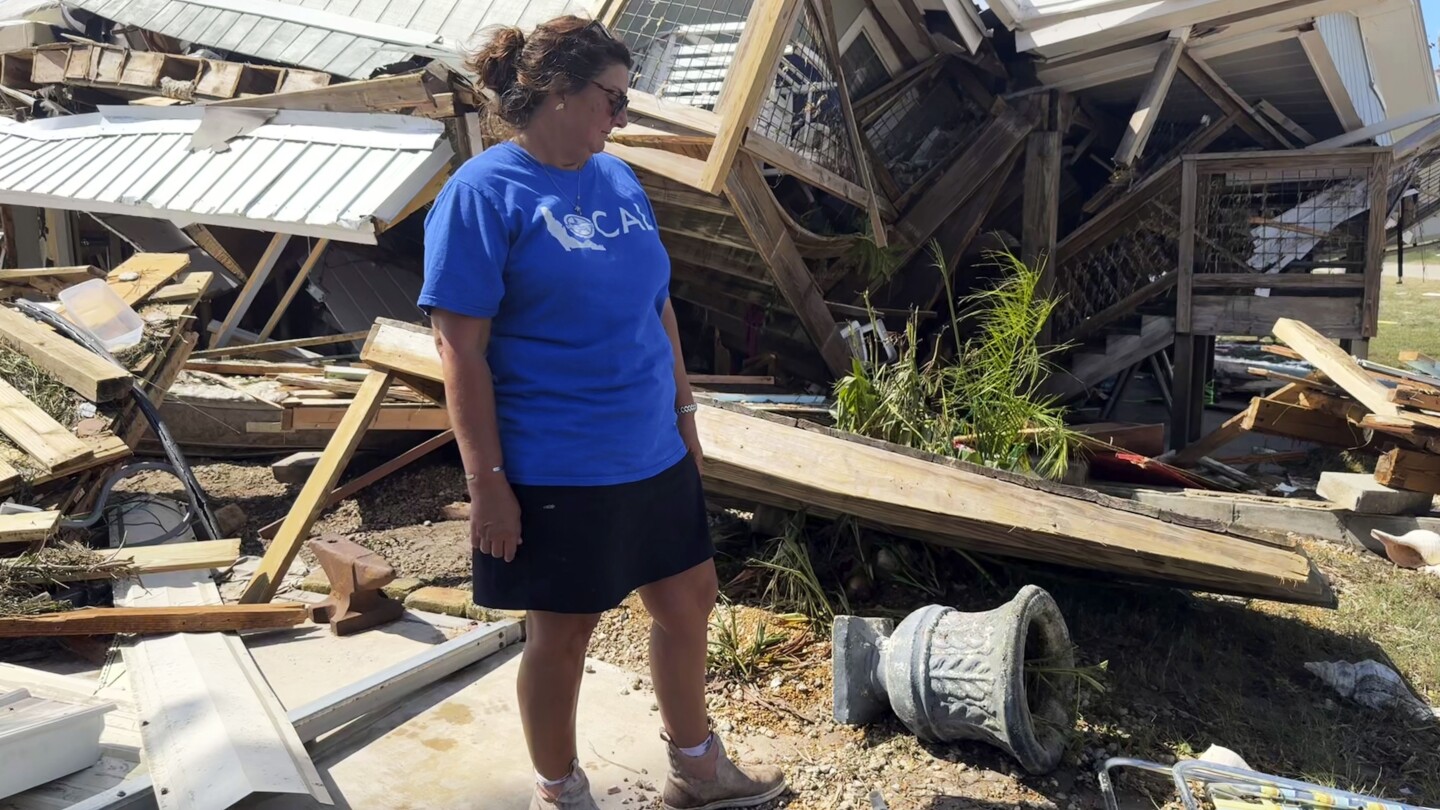It was just a month ago that Brooke Hiers left the state-issued emergency trailer where her family had lived since Hurricane Idalia slammed into her Gulf Coast fishing village of Horseshoe Beach in August 2023.
Hiers and her husband Clint were still finishing the electrical work in the home they painstakingly rebuilt themselves, wiping out Clint’s savings to do so. They never will finish that wiring job.
Hurricane Helene blew their newly renovated home off its four foot-high pilings, sending it floating into the neighbor’s yard next door.
For the third time in 13 months, this windswept stretch of Florida’s Big Bend took a direct hit from a hurricane — a one-two-three punch to a 50-mile (80-kilometer) sliver of the state’s more than 8,400 miles (13,500 kilometers) of coastline, first by Idalia, then Category 1 Hurricane Debby in August 2024 and now Helene.



They should not. As the climate continues to change, Florida is going to continue to be the recipient of yearly mega-storms that destroy towns over and over.
I am fully convinced that large chunks of Florida are technically no longer habitable, and trying to live there anymore is a mistake.
Middle of the state is probably fine, but anything within about 15 miles of the coast should be avoided. Also anywhere within a mile of a major river or lake.
Sadly, it’s the coastal areas that are the nicest, while the middle of the state is unpleasantly humid much of the year. The last time I was in Florida, I spent considerable time in Orlando, and hated every minute of it.
There’s also the issue of seawater pollution in their drinking water. It’s going to keep getting worse.
Agree, that or homes there will need to become sealable concrete bunkers that can be abandoned when needed without worry.
Unrealistic expense, and undesirable lifestyle
They are habitable with the correct building codes. Northern Florida historically got very few hurricanes so the buildings are not hurricane resistant. The fact that their house floated away is the red flag that the home could never survive a hurricane. Houses in South Florida are concrete block exteriors. In the Keys you can’t have any living space at all on the first floor too.
It does make it much more expensive to build but I see that rule becoming necessary in all coastal areas.
The extreme damage will be when hurricanes start making regular landfall in even less historically hurricane prone areas (see Western NC getting hit by the same storm at a fraction of the strength it hit Florida with). We already had hurricane Sandy fuck up NJ. It won’t be pretty when a similar storm hits Philly, NYC, DC, etc.